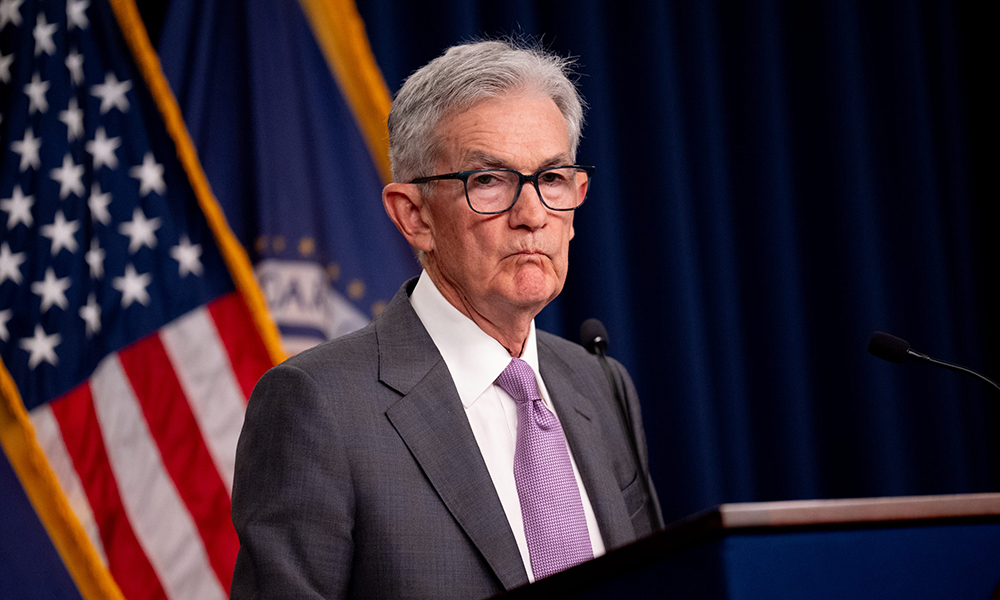
從紙面上看,美國經濟似乎依舊強勁,但隨著對“氛圍衰退”的擔憂成為主流,美國人卻比以往更擔心失業。
由Z世代經濟學家和TikTok網紅吉拉·斯坎倫創造的合成詞“氛圍衰退”,是指經濟并未陷入衰退但公眾的金融情緒卻非常消極這種脫節的現象。隨著股市與就業焦慮之間的分歧越來越大,這種現象似乎正在達到高潮。
紐約聯邦儲備銀行(Federal Reserve Bank of New York)的勞動力市場預期調查顯示,7月,平均預期失業概率提高到4.4%,這是自2014年以來的最高水平,遠高于一年前的3.9%。
7月份找工作者的比例達到28.4%,同樣是自2014年以來的最高水平,與一年前的19.4%相比有大幅提高。這份報告調查了全美1,000名具有代表性的受訪者,報告強調了其他多個令人擔憂的勞動力趨勢,包括仍在為相同雇主工作的人數降至歷史最低。
與此同時,在這份報告出爐的同時,周一美國股市總體連續八周上漲,而且7月份的零售銷售創下一年多以來的最大漲幅。
勞動力市場疲軟的信號,例如7月份不及預期的就業報告和失業率升高等,依舊讓一些人產生了氛圍衰退的擔憂。先買后付公司Affirm在6月份的一項研究發現,大多數人相信美國經濟陷入了衰退。與此同時,沃頓商學院(Wharton)教授杰瑞米·西格爾等著名經濟學家認為,美國仍處在“金發姑娘經濟”階段,即增長強勁,且通脹速度減慢。經濟學家們用“金發姑娘經濟”形容經濟狀況,就像童話故事《金發姑娘與三只熊》(Goldilocks and the Three Bears)中所描述的那樣“恰到好處”,既不過冷,也不過熱。
市場參與者將密切關注美聯儲主席杰羅姆·鮑威爾本周五將在懷俄明州杰克遜霍爾發表的年度講話,從中找到美聯儲即將降息的蛛絲馬跡。
在為期三天的杰克遜霍爾會議之前,美聯儲高官就已經注意到疲軟的就業數據,有多位高官稱,美聯儲需要關注另外一項重要任務,最大程度增加就業。
芝加哥聯儲(Chicago Fed)主席奧斯坦·古爾斯比和舊金山聯儲(San Francisco Fed)主席瑪麗·C·戴利表示,美聯儲一直在密切關注失業率,用于評估是否降息,以及進行多大幅度的降息。
上周,亞特蘭大聯儲(Atlanta Fed)主席拉斐爾·波斯迪克對《金融時報》表示,他對美聯儲在9月份的下一次會議上降息持開放態度,而且美聯儲必須“格外警惕”。
他說道:“因為我們的政策無論效果好壞,時間上都存在滯后。我們無法承受拖延的后果。我們必須盡快行動。”(財富中文網)
譯者:劉進龍
審校:汪皓
從紙面上看,美國經濟似乎依舊強勁,但隨著對“氛圍衰退”的擔憂成為主流,美國人卻比以往更擔心失業。
由Z世代經濟學家和TikTok網紅吉拉·斯坎倫創造的合成詞“氛圍衰退”,是指經濟并未陷入衰退但公眾的金融情緒卻非常消極這種脫節的現象。隨著股市與就業焦慮之間的分歧越來越大,這種現象似乎正在達到高潮。
紐約聯邦儲備銀行(Federal Reserve Bank of New York)的勞動力市場預期調查顯示,7月,平均預期失業概率提高到4.4%,這是自2014年以來的最高水平,遠高于一年前的3.9%。
7月份找工作者的比例達到28.4%,同樣是自2014年以來的最高水平,與一年前的19.4%相比有大幅提高。這份報告調查了全美1,000名具有代表性的受訪者,報告強調了其他多個令人擔憂的勞動力趨勢,包括仍在為相同雇主工作的人數降至歷史最低。
與此同時,在這份報告出爐的同時,周一美國股市總體連續八周上漲,而且7月份的零售銷售創下一年多以來的最大漲幅。
勞動力市場疲軟的信號,例如7月份不及預期的就業報告和失業率升高等,依舊讓一些人產生了氛圍衰退的擔憂。先買后付公司Affirm在6月份的一項研究發現,大多數人相信美國經濟陷入了衰退。與此同時,沃頓商學院(Wharton)教授杰瑞米·西格爾等著名經濟學家認為,美國仍處在“金發姑娘經濟”階段,即增長強勁,且通脹速度減慢。經濟學家們用“金發姑娘經濟”形容經濟狀況,就像童話故事《金發姑娘與三只熊》(Goldilocks and the Three Bears)中所描述的那樣“恰到好處”,既不過冷,也不過熱。
市場參與者將密切關注美聯儲主席杰羅姆·鮑威爾本周五將在懷俄明州杰克遜霍爾發表的年度講話,從中找到美聯儲即將降息的蛛絲馬跡。
在為期三天的杰克遜霍爾會議之前,美聯儲高官就已經注意到疲軟的就業數據,有多位高官稱,美聯儲需要關注另外一項重要任務,最大程度增加就業。
芝加哥聯儲(Chicago Fed)主席奧斯坦·古爾斯比和舊金山聯儲(San Francisco Fed)主席瑪麗·C·戴利表示,美聯儲一直在密切關注失業率,用于評估是否降息,以及進行多大幅度的降息。
上周,亞特蘭大聯儲(Atlanta Fed)主席拉斐爾·波斯迪克對《金融時報》表示,他對美聯儲在9月份的下一次會議上降息持開放態度,而且美聯儲必須“格外警惕”。
他說道:“因為我們的政策無論效果好壞,時間上都存在滯后。我們無法承受拖延的后果。我們必須盡快行動。”(財富中文網)
譯者:劉進龍
審校:汪皓
The economy may look strong on paper, but Americans are more worried than ever about losing their jobs as fears of a “vibecession” take hold.
The portmanteau “vibecession,” coined by Gen-Z economist and TikTok star Kyla Scanlon, refers to the disconnect that occurs when public financial sentiment is negative even though the economy isn’t in a recession. Given the growing chasm between the stock market and job anxiety, the phenomenon appears to be in full swing.
A labor-market expectations survey by the Federal Reserve Bank of New York showed that the average expected likelihood of being unemployed rose to 4.4% in July, the highest level since 2014 and up from 3.9% a year earlier.
The number of people seeking a job in July was also at its highest since 2014, at 28.4%—a marked increase over the 19.4% seeking jobs a year ago. The report, which surveyed 1,000 nationally representative respondents, also highlighted several other worrying labor trends including a record-low number of people still working for the same employer.
Meanwhile, the survey comes as the overall stock market recorded its eighth straight week of gains on Monday and retail sales in July recorded their biggest increase in over a year.
Still, signs of softening in the labor market, including a weaker-than-expected July jobs report and rising unemployment, have some worried about a vibecession. A June study by buy-now, pay-later company Affirm found that a majority of people believed that the U.S. was in a recession. Meanwhile top economists like Wharton professor Jeremy Siegel believe the U.S. is in a “Goldilocks economy” with strong growth and slowing inflation. Economists use the term to describe an economy that’s “just right,” or not too cold, and not too hot, as in the children’s story “Goldilocks and the Three Bears.”
Accordingly, market participants will have their eyes fixed on Fed Chairman Jerome Powell’s annual speech, on Friday in Jackson Hole, Wyo., for signs of an impending interest rate cut.
Top Federal Reserve leaders have taken notice of weakening labor numbers ahead of the three-day Jackson Hole meeting, and several have said the Fed needs to monitor its other mandate, striving for maximum employment.
Both Chicago Fed president Austan Goolsbee and San Francisco Fed president Mary C. Daly said the central bank was closely watching unemployment to gauge whether to cut rates and if so, by how much.
And last week, Atlanta Fed president Raphael Bostic told the Financial Times that he was open to the idea of the central bank cutting interest rates at its next meeting in September, and that the Fed has to be “extra vigilant.”
“Because our policies act with a lag in both directions, we can’t really afford to be late. We have to act as soon as possible,” he said.






